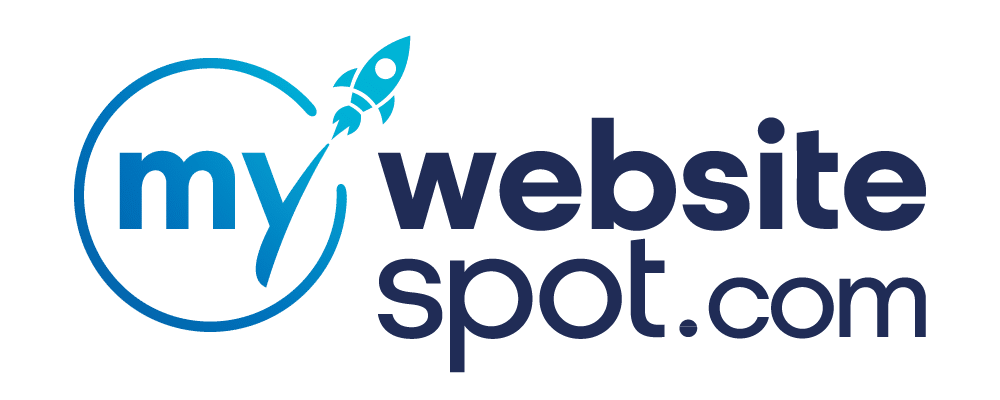You’ve poured your heart and soul into creating a digital presence representing your brand, ideas, and aspirations. Your website is not just a collection of web pages. It’s an extension of your business or personal identity.
With success, your digital fortress is constantly under siege by hackers, malicious actors, and many online threats. If you’ve found yourself dealing with hacking attempts, negative SEO attacks, and spam, you’re not alone.
But fear not – this article will serve as a guide to website security, helping you fortify your online presence and thwart the villains of the web.
What Does Website Security Involve?
Think of website security as the trusty suit of armor for your digital realm, a barrier standing strong against the relentless onslaught of online threats. It’s not just a single piece of software or a magical shield. It’s a comprehensive defense strategy that ensures your website’s integrity, confidentiality, and availability remain rock-solid.
Simply, it’s all about safeguarding your website from hackers, malware, and other digital miscreants who would love nothing more than to wreak havoc on your site and its precious users.
Now, let’s dive a little deeper into the two main components that make up this digital fortress:
Website Protection: Your Digital Shield
Imagine this as your website’s first line of defense – the digital shield that deflects incoming threats. It’s like the trusty moat around your castle. Here’s what it entails:
- Firewalls
These are your vigilant sentinels, tirelessly monitoring incoming and outgoing traffic. Firewalls analyze data packets, making sure only the safe ones get through while blocking any suspicious or malicious ones.
- Intrusion Detection Systems
Think of these as your watchful guards patrolling the virtual walls of your website. They’re on high alert for any signs of unauthorized access or unusual behavior, ready to raise the alarm at the slightest hint of danger.
- Encryption Protocols
Encryption is like the secret code that only your website and your visitors understand. It ensures that sensitive information, such as login credentials or financial data, remains hidden from prying eyes during transmission.

User Education: Knowledge is Your Best Defense
Now, let’s switch gears. While having a fortified fortress is crucial, it’s equally important to ensure that the people inside the castle understand how to keep it secure. Think of it as arming your knights and citizens with knowledge and wisdom to repel threats. Here’s what user education involves:
- Creating Awareness
Imagine gathering your digital citizens and explaining the lay of the land. It’s all about making them aware of the common threats lurking in the corners of the web – phishing scams, malware, and social engineering.
- Phishing scams typically involve fraudulent emails or websites designed to trick individuals into revealing sensitive information like passwords or credit card details to cybercriminals.
- Malware, short for malicious software, encompasses a wide range of harmful software applications that can infect and compromise computers or devices. These typically include viruses, Trojans, and spyware, often leading to data theft or system damage.
- Social engineering refers to manipulating and exploiting human psychology to deceive individuals into revealing confidential information or performing actions they wouldn’t normally do. It often involves building trust or creating a sense of urgency through impersonation or manipulation tactics.
- Promoting Safe Practices
Just like teaching your knights to wield their swords with precision, you want your users to navigate the internet safely. This means instilling good online habits, like using strong and unique passwords, being cautious about clicking on suspicious links, and recognizing potential traps.
Website security is not just about setting up a firewall and calling it a day. It’s about building a robust defense system and ensuring everyone within your digital kingdom has the knowledge and tools to protect it.
The 7 Types of Website Security
Now, let’s delve into the seven key aspects of website security, each playing a critical role in fortifying your online presence:
1. Network Security
Network security is the digital guardian of your website’s communication channels, ensuring safe connections between your site, users, and other systems. Just like a bridge protecting a bustling city, network security shields your online presence from cyber threats.
It encompasses crucial measures like firewalls, VPNs, and secure data transmission protocols like HTTPS. By implementing these safeguards, network security ensures that only authorized traffic can enter, thwarting any potential threats attempting to breach your website’s defenses.
2. Server Security
Server security is the stalwart defender of your website’s core, akin to a knight guarding a digital kingdom’s heart. Your website’s server is the control center, storing data, processing requests, and maintaining operations.
Server security ensures the server’s safety through regular software updates, robust access controls, and vigilant monitoring for any suspicious activities that could compromise it. Whether you’re running a thriving e-commerce platform or a personal blog, server security is your guardian, preserving the integrity of your digital core and ensuring uninterrupted online operations

3. Web Application Security
Web applications are the interactive elements of your site, like forms and login pages, and they are a common target for cyberattacks. Ensuring web application security involves identifying and addressing vulnerabilities in your website’s code, such as SQL injection, cross-site scripting (XSS), and CSRF (Cross-Site Request Forgery). Doing so prevents malicious actors from exploiting these weaknesses to compromise your website’s integrity or steal sensitive data.
4. Data Security
Data security is safeguarding your users’ sensitive information. This includes personal data like names, email addresses, and financial details. Data security involves implementing encryption techniques, using secure storage methods, and adhering to stringent data privacy.
Websites that handle medical information (electronic medical records (EMR), electronic health records (EHR), or (electronic) protected health information (PHI or ePHI)) must follow compliance standards such as HIPAA and CCPA. Doing so prevents unauthorized access, data breaches, and potential legal consequences.
5. Identity and Access Management
Identity and Access Management (IAM) controls who can access your website’s backend. The backend contains sensitive data and critical operations. IAM involves implementing robust authentication methods like multi-factor authentication (MFA) and user role-based permissions to ensure that only authorized individuals can access and modify your website’s core systems. IAM helps safeguard your website’s vital assets and data, reducing the risk of unauthorized access and potential security breaches.
6. Incident Response and Recovery
Incident Response and Recovery prepare you for unforeseen events like data breaches, cyberattacks, or system failures. Despite robust security measures, incidents can still occur, potentially disrupting your online operations and risking data loss.
Incident Response involves defining a clear plan to detect, respond to, and mitigate such incidents swiftly, ensuring you are well-prepared to address any security breaches. On the other hand, recovery focuses on reliable backup and restoration procedures that minimize downtime, recover lost data, and help your website resume normal operation.
7. User Education and Awareness
Your website’s users are active participants in its ecosystem, and educating them is crucial because they interact with your site’s content and share personal information. By making them aware of common threats like phishing scams and emphasizing the importance of strong, unique passwords, you equip them to recognize and mitigate potential risks.
5 Threats to Your Website Security
Knowledge is your greatest ally in safeguarding your online presence. Stay vigilant, and be prepared to protect your online realm against these lurking adversaries. Here are five common threats to website security:
- Malware Infections: Malware, or malicious software, can infect your website through vulnerabilities in its code. Once inside, it can harm your website in various ways, including spreading to your visitors’ devices, defacing your site, or stealing sensitive data like customer information or payment details.
- DDoS Attacks: Distributed Denial of Service (DDoS) attacks flood your website with massive traffic from multiple sources, overwhelming your server’s capacity. This flood of traffic makes your website slow or completely inaccessible to legitimate users. DDoS attacks can disrupt your online operations, lead to financial losses, and damage your online reputation.
- SQL Injection: SQL injection attacks target poorly secured web applications. Hackers manipulate input fields on your website to execute malicious SQL queries on your database. This can lead to data theft, data manipulation, or even the complete compromise of your website’s database.
- Phishing Attacks: Phishing attacks involve cybercriminals posing as trusted entities, such as banks or well-known websites, to trick users into revealing sensitive information like login credentials, credit card numbers, or personal identification. These attacks can lead to unauthorized account access, data breaches, and financial losses for both users and website owners.
- Zero-Day Vulnerabilities: Zero-day vulnerabilities are undiscovered security flaws in software or applications. Hackers exploit these vulnerabilities before the software vendor is aware of them or has released patches, making it challenging to defend against these attacks. A successful zero-day attack can result in unauthorized access, data breaches, and significant website security damage.
What Causes Website Vulnerability and How Can You Mitigate It?
Outdated Software
One of the primary causes of website vulnerability is neglecting to keep your website’s software, plugins, and themes up to date. When software becomes outdated, it often contains unpatched security vulnerabilities that hackers can easily exploit. Failing to apply these updates leaves your website exposed to potential threats.
Regularly updating your website software, plugins, and themes is a critical preventive step against outdated software vulnerabilities. These updates typically include security patches designed to address known vulnerabilities and close potential security loopholes. By staying current with these updates, you ensure your website’s software remains resilient against emerging threats and cyberattacks.
Weak Passwords
Weak passwords are a glaring weakness that can open the door to attackers. Using easily guessable passwords or not enforcing password complexity can make it relatively simple for cybercriminals to gain unauthorized access to your website and its sensitive data.
Enforcing strong password policies and considering multi-factor authentication (MFA) are vital preventive steps against weak passwords. Strong password policies require users to create complex, difficult-to-guess passwords, reducing the risk of brute force or dictionary attacks.
MFA adds an additional layer of security by requiring users to provide multiple forms of verification, such as a password and a one-time code sent to their mobile device. These measures collectively make it significantly more challenging for attackers to gain unauthorized access to your website.

Insufficient Security Measures
Websites lacking robust security measures are more susceptible to breaches. Failing to implement tools like firewalls, intrusion detection systems, and regular security audits can leave your website vulnerable to various attacks, including DDoS attacks, SQL injections, and malware infiltrations.
Investing in a robust website firewall acts as a proactive defense mechanism for your website, continuously monitoring incoming traffic and actively blocking malicious attempts to breach your site. It provides critical protection against various online threats, including DDoS attacks, SQL injections, and malware infiltration.
Conducting regular security audits and vulnerability scanning is another preventive step. These practices involve systematic reviews and tests of your website’s defenses to identify potential weaknesses. Security audits provide a proactive assessment of your website’s security, similar to a regular checkup. Vulnerability scanning actively searches for known vulnerabilities in your system, allowing you to address and patch them promptly.
By integrating these measures into your security strategy, you actively reduce the risk of security breaches, data compromises, and other cybersecurity incidents.
Lack of User Training
Even with robust technical defenses, uninformed users can inadvertently compromise your website’s security. They may fall victim to phishing attacks, click on malicious links, or inadvertently expose your website to risks.
Educating users about safe online practices is essential to minimize these vulnerabilities and protect your digital assets effectively.
Educating your team about safe online practices, including recognizing phishing attempts and maintaining good security hygiene, is a direct and proactive step against a lack of user training. When your team members are well-informed and aware of potential threats, they become a crucial part of your website’s defense. They can recognize and thwart phishing attempts, avoid falling victim to online scams, and take measures to protect sensitive information.
The Road to a Fortified Digital Presence
Your website is more than just lines of code and pretty graphics – it’s your digital identity and a reflection of your business. You can take significant steps toward fortifying your website’s defenses by implementing best practices like regular updates, strong passwords, and security audits.
Your journey to a secure online presence doesn’t have to be a solitary one. Don’t let hackers, negative SEO attacks, or spam compromise your online presence.
If you need expert guidance and comprehensive web security services, don’t hesitate to contact My Website Spot. Our team has prioritized our clients’ online security for over 18 years and is here to help you safeguard your digital fortress.

